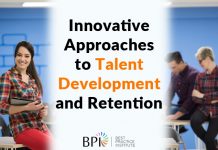Working with organizations around the globe, we have found it universally true that people support what they help to create. For leaders, the challenge then is how to get everyone from every corner of the organization passionately involved in a shared vision of the future and working together on actions needed to bring it about. This challenge is compounded by the need for everyone to respond to continuous changes inside and outside of the organization.
The Whole-Scale® approach to organization change is built on the principle of getting people to “one brain and one heart.” That means everyone seeing the same things, wanting the same things and acting accordingly. Kathie Dannemiller, the late founder of Dannemiller Tyson Associates and Whole-Scale® change said: “With Whole-Scale® we get everyone—the whole system—involved in the conversation of rapid change and what it is going to take. It’s the ultimate employee empowerment. I think of it as getting everyone in the organization pointed in the same direction so every decision is connected around the mind and the heart.”
Three principles of the Whole-Scale® approach are key to supporting an agile, empowered culture. Together they help the people of an organization “stay whole” by continuously reinforcing system connections. They work in combination to ensure that there is shared information and shared intention across the organization.
1. The power of microcosm to create system awareness: Microcosms in an organization are groups of people that represent the whole of the organization in miniature. They bring different points of view because they come from different places, levels, job titles, locations and have had different experiences. A true microcosm is a diagonal slice from the CEO to the janitor and any group that represents the diverse perspectives of different parts of the organization can add a powerful system view. We use microcosm teams in planning large group events to ensure that the meeting will work. In a room of 500 people will be seated at tables of eight where each table is a microcosm of the whole room. The result is that the conversations are system conversations.
2. Converge/Diverge process flow to create critical mass. A change roadmap uses a series of large group and small group meetings to alternately plan (large group) and then act (small groups) while keeping the system whole. The model is a design tool for the change journey to create and sustain change in the organization. Small groups are usually intact work teams or temporary task teams either planning actions or taking actions. Larger group meetings are designed to bring everyone together to share information, make decisions and plan further action. The converge/diverge pattern allows actions to be coordinated across the entire organization even as new information is added. The result is a critical mass of the organization remains committed to strategic goals.
3. Action learning to support continuous improvement. The concept of action learning (Plan-Do-Check-Act) dates back to the origins of organizational development with Kurt Lewin and D. Edwards Deming. The principle of continuous learning is more important today than ever. As author Mary Katherine Bateson has noted, “As the world changes, we increasing find ourselves on stage without a script challenged to improvise.” Creating an agile organizational culture requires that it be able to improvise. Leaders can create a culture that learns from its actions while staying on track to achieve and sustain a shared vision of the future. Change in an organization is not a single event or happening; it’s a journey. That journey has stops, starts, detours, high point and low points. And at each cross road on the journey we ask critical questions, they are:
a. What did we say we would do?
b. What did we actually do?
c. What did we learn from what we did?
d. And based on that, what do we do now, in service of our destination?
About the authors: Al Blixt and Mary Eggers are senior partners in Dannemiller Tyson Associates and developers of the Whole-Scale® approach to change in organization and communities around the world. They are co-authors of “Whole-Scale Change: Unleashing the Magic in Organization: and the “Whole-Scale Toolkit.”










